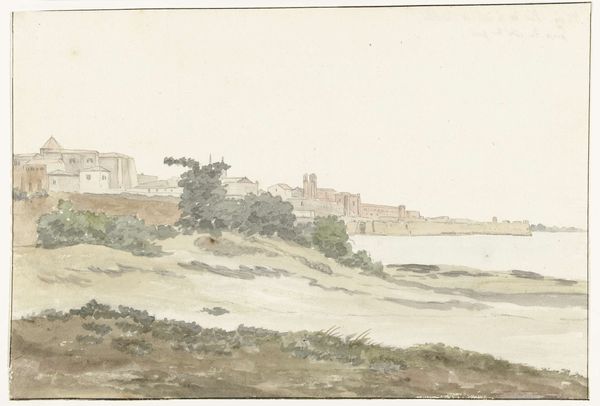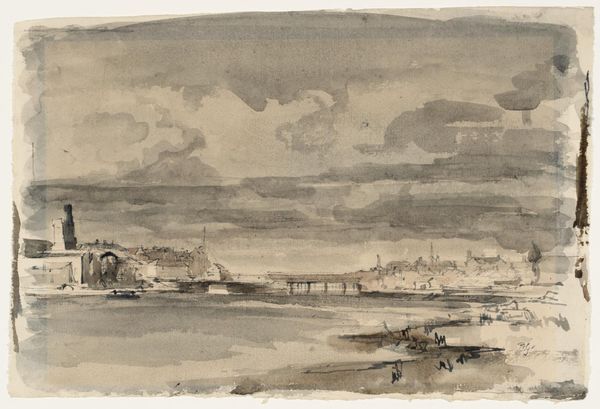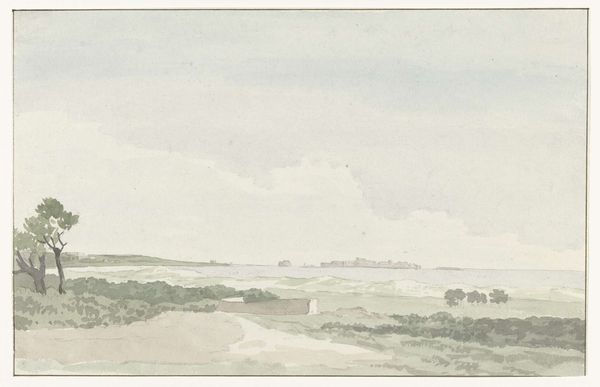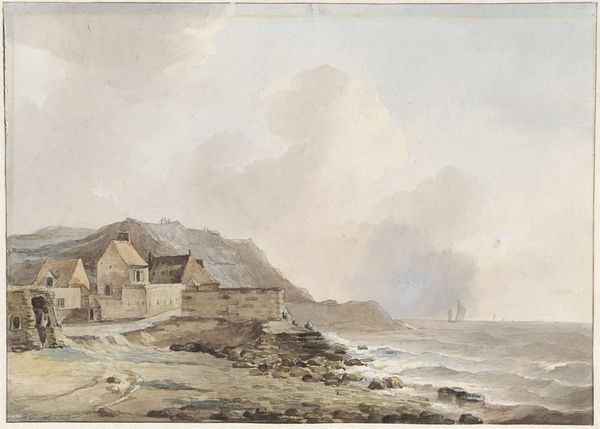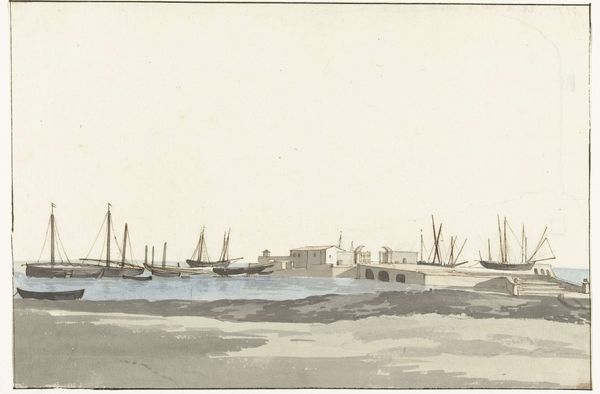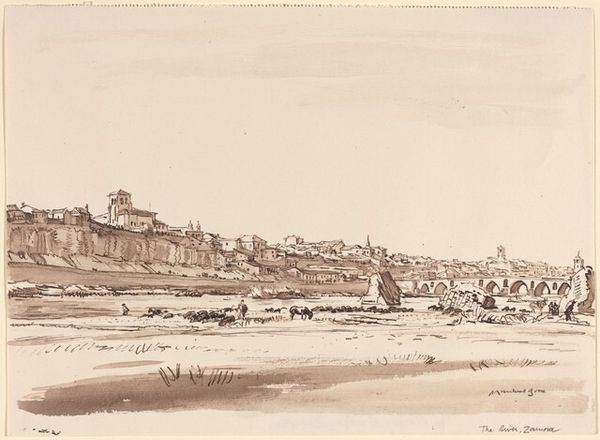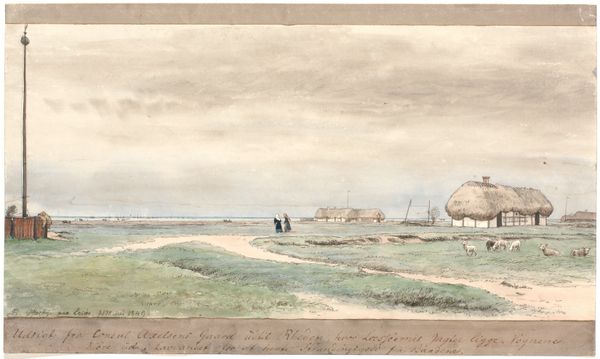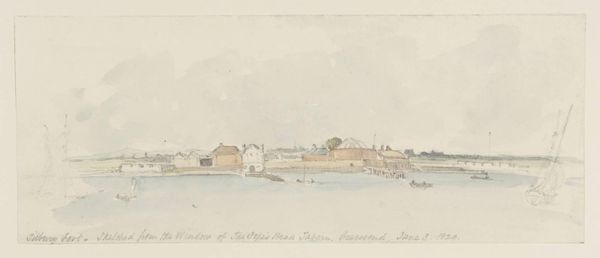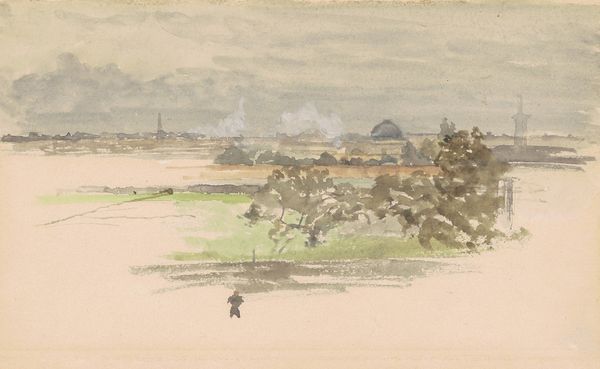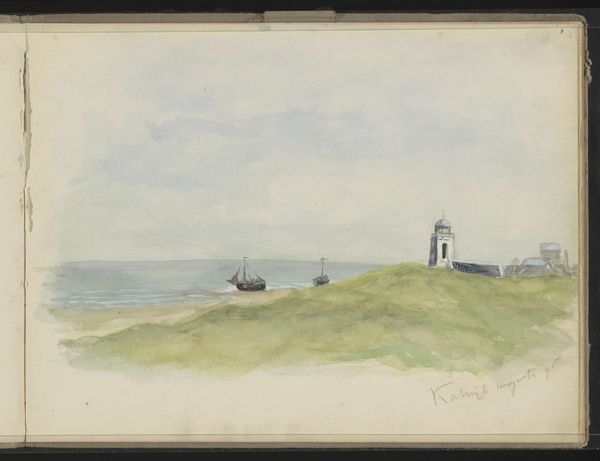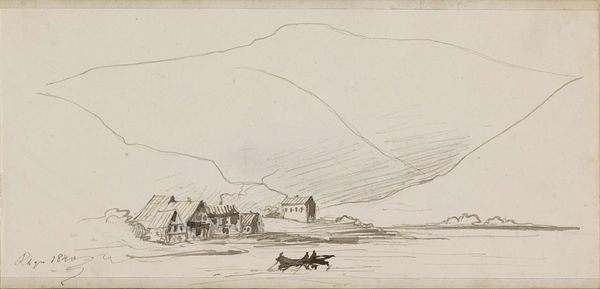
Copyright: Public Domain: Artvee
Editor: This watercolor, "Castle or Fortress on the Coast," created between 1846 and 1902 by James Tissot, really captures a sort of solemnity. The fortress looks so imposing against the muted colors of the sky and sea. How do you interpret this work? Curator: I'm immediately drawn to the fortress itself. It stands as a powerful symbol, wouldn't you agree? These types of structures have resonated through centuries, representing security, power, but also isolation. Editor: Isolation? Curator: Absolutely. The fortress, seemingly separated from the mainland, evokes feelings of solitude. Think of the psychological weight such a place holds. Who resides there? What are they guarding, or being guarded from? Consider also the coastline itself, often seen in Romantic painting, reflecting sublime power and evoking certain emotions. Editor: That makes sense. I hadn't considered the psychological aspects so deeply. The small figures in the foreground now seem even more vulnerable in contrast to the fortress. Curator: Precisely! It’s about that tension, isn't it? The watercolor technique adds another layer. The delicate washes almost suggest a dreamlike quality. It's a fortress, yes, but also perhaps an idea, a memory… a looming presence in our cultural consciousness. What feeling remains with you now? Editor: Definitely a sense of history, and also the power that symbols hold across time, maybe a reflection on how societies perceive protection and threat. Curator: Exactly. These coastal fortresses can teach us volumes about the enduring power of cultural memory embedded in visual symbols, about our constant negotiation of safety and vulnerability.
Comments
No comments
Be the first to comment and join the conversation on the ultimate creative platform.
